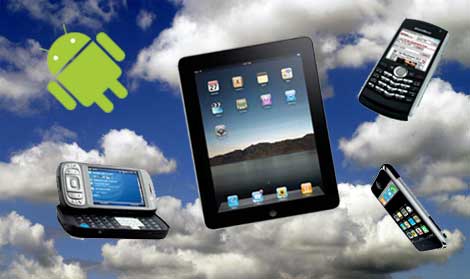
According to an IDC study, employee-owned smartphones will represent more than half (56%) of the business smartphones shipped in 2013, for a total of 56.7 million devices going into the hands of individual workers in the next three years.
Changing the corporate mobile strategy
This development seems to create an awful lot of potential for organizations wanting to harness the various smartphone capabilities for providing employee access to work-related tasks. For that to happen, IT management will need to determine ways to embrace the personal mobility of employees while maintaining effective security and management measures, particularly when it comes to the corporate network. Allowing smartphone access to corporate resources often requires adapting a new mobile strategy and policies.
Employee owned smartphones are increasing
As smartphone prices have dropped, their sales have increased sharply. According to Gartner, 172 million smartphones were sold in 2010 globally. Increasingly, employees want to use their own personal smartphones for work-related tasks, such as checking email or calendar appointments. The consulting firm Yankee Group says 54% of employees already use their own mobile devices for business purposes. Hence, it seems inevitable that IT executives must build a strategy that incorporates employee-owned smartphones.
What are the benefits for organizations?
According to the IDC study, there are several reasons why organizations should adapt their mobile strategies to incorporate employee-owned smartphones:
- Costs: Having the employee taking over the initial cost of the devices and the ongoing voice/data contract saves the employer significant costs
- Technology enthusiasm: Organizations should embrace employee’s enthusiasm for new technology and commitment.
- Benefits of mobility: There are many benefits that come with a mobile workforce – faster decision making, agility, effective communications and flexibility to name a few.
Due to budget restraints, or even downsizing, many organizations can only provide corporate-owned smartphones to a limited number of employees. Therefore, embracing a mobile strategy that provides a stipend to employees that are using their own mobile devices seems a smart move. Organizations can still save a considerable amount of money over expanding corporate-liable policies while engendering loyalty and favor among their workers.
More Smartphones = More Opportunities and Challenges
The challenge is to determine what services should be allowed, considering appropriate security measures. What is needed is a way to add employees to the corporate network easily and cost-effectively while maintaining the most important and desired security levels and remote management capabilities. Traditionally, the RIM BlackBerry Enterprise Server (BES) has been the gold standard among organizations with corporate-liable policies by providing sophisticated security and management capabilities.
However, smartphones like Android and iPhone are becoming more and more popular, and organizations need to embrace these as part of the employee-owned smartphone strategy as well. These are also supporting minimum security requirements like timed-lock and remote wipe in the case of lost or stolen handset. Some mobile apps, like Touchdown for Android, provide Exchange ActiveSync capabilities that support security policies to ensure security of the corporate data on the smartphone. Clearly, organizations need to rethink their mobile smartphone strategies and take into account the proliferation of employee-owned smartphones.
Olafur Ingthorsson is an IT professional in Reykjavik, Iceland who writes about cloud computing at Cloud Computing Topics.




